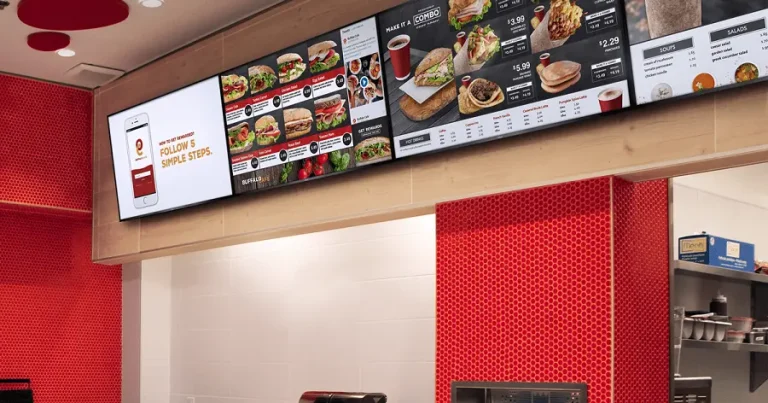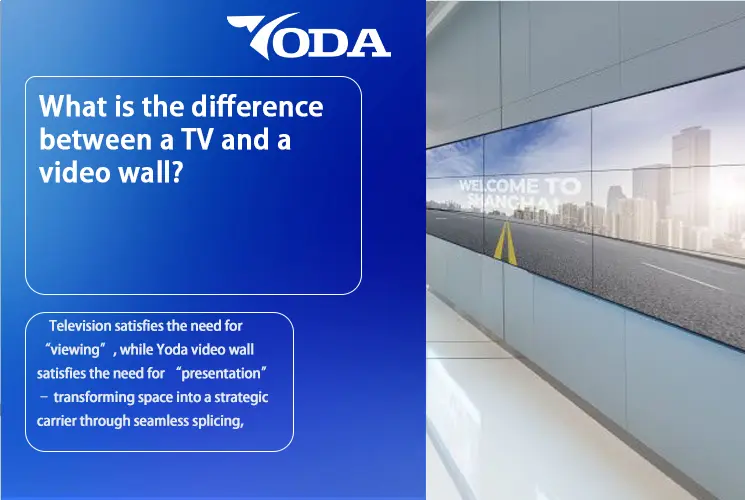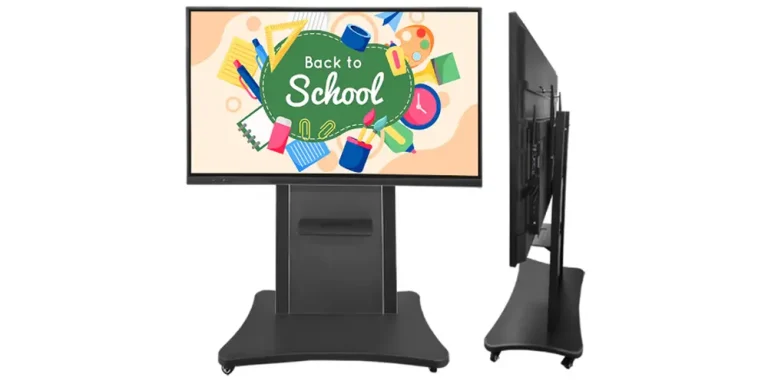
Portable Smart TV vs Traditional TV
Author:Yoda . 10/13/2025
In this era of information explosion and widespread mobile device adoption, portable smart TV are becoming a popular product category. For home users, campers, trade show organizers, commercial presenters, digital signage manufacturers, and more, different use cases determine product selection. This article will compare portable smart TVs and traditional TVs from the perspectives of technology, user experience, and application scenarios, providing a more comprehensive understanding of this emerging category.
Definition and Essential Differences
Traditional TV
“Traditional TV” generally refers to flat-panel or LCD TVs for home or commercial use. These TVs are typically wired, fixed-mount, large, and heavy. Traditional TVs are often placed as fixed display devices in living rooms, conference rooms, or public spaces.
Key features include:
Features primarily include basic TV viewing plus smart TV functionality (if supported)
Portable Smart TV
A portable smart TV generally refers to a display device with the following characteristics:
Optimized for brightness, sunlight resistance, interface diversity, durability, touch capabilities, and mobility
Simply put, a portable smart TV is a device that sits between a portable monitor and a traditional TV, offering full smart TV functionality.

Portable Smart TV vs. Traditional TV: Technology and User Experience Comparison
Below, we compare these two types of TVs from multiple perspectives.
1. Portability and Installation Flexibility
Portable Smart TVs: Lightweight and thin, often with folding stands, handles, or hooks. They are particularly suitable for camping, RVs and caravans, outdoor activities, trade shows, and temporary exhibitions.
2. Power Supply and Battery Life
Portable Smart TVs: Typically have a built-in high-capacity lithium battery (or support external batteries) and can also be compatible with 12V/24V vehicle power supplies, solar panels, emergency power supplies, and more.
3. Brightness and Display Quality
Portable Smart TVs: To cope with outdoor environments, they typically feature high-brightness screens (e.g., 1000 nit, 1500 nit, or higher), with optimized anti-reflective coatings and backlight designs to enhance readability in sunlight.
4. Smart Features and Interactions
Portable Smart TVs: Not only do they offer comprehensive smart features, they also emphasize an interactive experience. Many portable smart TVs support touch screens or multi-touch, allowing for more intuitive operation outdoors, at trade shows, and in exhibition halls.
5. Ports, Expandability, and Durability
Portable Smart TVs typically offer more flexible interface design: In addition to common interfaces, they may also support SD cards, USB-C, Type-C, POE power, wireless screen mirroring, and audio jacks. Furthermore, to accommodate outdoor use, they may be waterproof, dustproof, and impact-resistant.
6. Cost and Value
Portable Smart TVs: To meet portability, battery life, brightness, and intelligent features, they are relatively expensive. However, they offer significant added value for specific scenarios.
Application Scenario Comparison and Recommended Applications
Let’s examine several typical scenarios to see which type of TV is most suitable and the advantages of portable Smart TVs in these scenarios.
| Scenario | Traditional TV | Advantages of Portable Smart TV |
| Living Room, Bedroom | Applicable | If used as a replacement for a fixed TV, portable models can also be used, but the cost-effectiveness may be lower. |
| Camping/Outdoor Activities | Mostly unsuitable | Lightweight, long battery life, light-resistant, and portable |
| RVs/Caravans | Depends on power supply and installation | Can be used with vehicle power or battery systems, making it ideal |
| Outdoor Parties/Performances | Typically use projection or large LED screens | Can be used as supplementary, sideline broadcast, or backup display devices |
| Exhibitions/Trades/Expos | Often use large-screen displays, billboards, and LEDs | Can be used as interactive screens, demonstration screens, and display screens |
| Digital Signage | Typically use professional digital signage screens | Can be used for mobile booths, pop-up stores, and temporary displays |
As shown in the table above, portable smart TVs have clear advantages in mobile settings, temporary displays, and outdoor environments. Traditional TVs, on the other hand, still dominate indoor and large-scale fixed venues.

Buying Guide: How to Choose the Right Portable Smart TV
1. Brightness and Light Resistance
Outdoor lighting is intense, so brightness is crucial. We recommend models with at least 800 nits / 1000 nits or higher, and with an anti-reflective coating, hash filter, or suitable light-blocking structure.
2. Size and Portability
Sizes typically range from 10 inches to 32 inches. When choosing, balance portability with viewing comfort. For camping and RV use, 24-32 inches may be a suitable range. Also consider weight, thickness, and carrying structure.
3. Battery Life and Power Supply
Battery capacity, charging method, vehicle power compatibility, and solar compatibility are all crucial. For outdoor activities or camping, the “best portable smart TV for camping” often focuses on battery life and power flexibility.
4. Display Resolution and Panel Quality
Full HD (1080p) or higher resolution (such as 4K) is preferred, and an IPS, VA, or similar high-contrast panel should be selected. Color reproduction and viewing angles are also important.
5. Smart Features and System Performance
Select an operating system that runs smoothly and offers a rich application library, along with connectivity options such as WiFi and Bluetooth. Touchscreen support makes portable smart TVs with touch screens more interactive and highly popular at trade shows and business presentations.
6. Ports and Expandability
Common ports (HDMI, USB, SD card, audio jack, headphone jack, RJ45, Type-C, etc.) should be included, along with support for wireless screen projection, DLNA, Miracast, and AirPlay. Dustproof, waterproof, or ruggedized design are also crucial.
7. Ruggedness and Durability
Outdoor use can be challenging, with varying temperatures, humidity, and dust. When purchasing, consider the housing material, protection rating (such as IP rating), heat dissipation design, and drop resistance.
8. Brand and After-Sales Support
Yoda’s portable smart TV comes with a one-year warranty and technical support. Factory direct supply, cost savings, quality control, and customization capabilities.

Yoda’s Competitive Advantages in the Portable Smart TV Market
1. Factory Direct Supply, Cost Optimization
As a digital signage manufacturer, Yoda boasts integrated capabilities from R&D, production, to shipping. We offer factory-direct portable smart TV displays, eliminating intermediary distributors and offering more competitive pricing and customization flexibility.
2. Specialized for Digital Signage/Commercial Applications
Yoda’s portable smart TV for digital signage offers the following advantages: remote content management, centralized network control, automatic power on/off, broadcast upgrades, and content playback policy control.
3. Customization Capabilities and Solution Support
For specialized clients (such as those attending trade shows, commercial displays, outdoor events, corporate demonstrations, and RV system integrators), Yoda offers customized screen sizes, brightness, interface combinations, system firmware customization, structural reinforcement, and touch or non-touch versions.
4. Quality Assurance and After-Sales Service
Yoda ships directly from its factory. We rigorously test each device before shipment to ensure key parameters such as brightness, heat dissipation, and battery life. Furthermore, we establish overseas after-sales support, repair services, and parts supply capabilities to boost customer confidence.
Article Summary
Traditional TVs still enjoy a mature and cost-effective advantage in fixed, indoor environments.
However, in scenarios such as mobile, outdoor, temporary displays, commercial demonstrations, RV life, and exhibitions, portable smart TVs offer significant advantages due to their portability, battery life, optimized brightness, intelligent features, and flexible interfaces. As a digital signage manufacturer, Yoda leverages its factory-direct supply capabilities to provide customized, quality-controlled, and cost-effective portable smart TV displays.
If you’re looking for a smart portable display that combines entertainment, business, and presentation, the Yoda Portable Smart TV is your most reliable choice.






